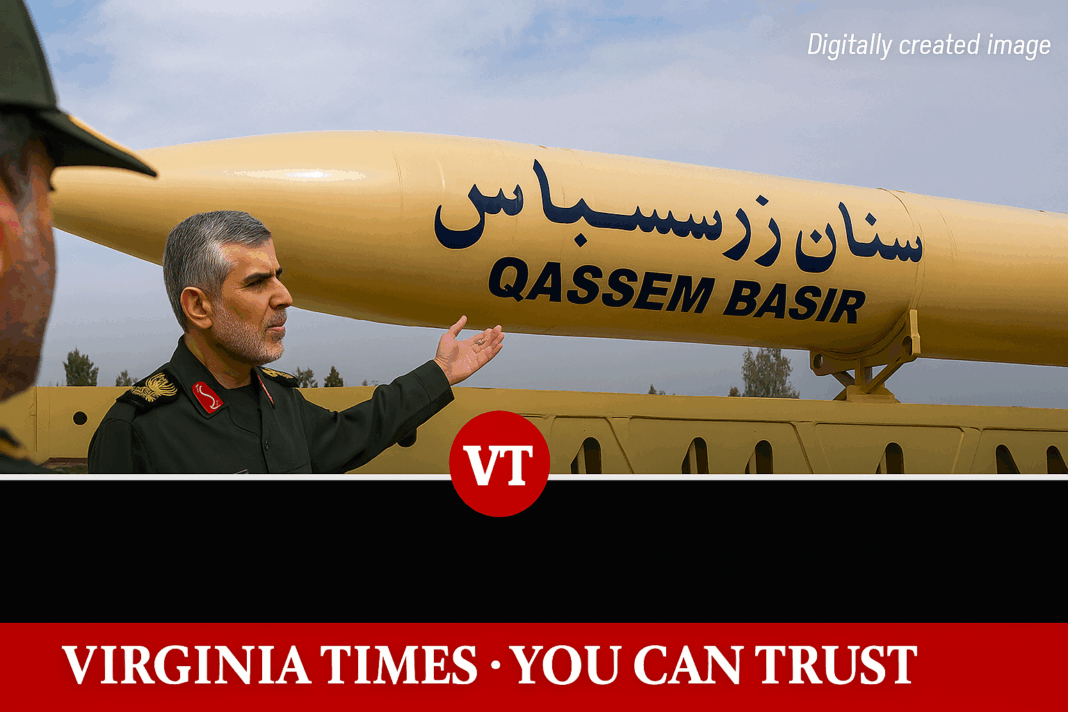According to the Institute for the Study of War (ISW), Iran unveiled a new medium-range ballistic missile named Qassem Basir on May 4, signaling a significant advancement in its missile technology amid rising regional tensions and nuclear standoffs with the United States and Israel.
The Qassem Basir, an upgraded version of the Haj Qassem missile, is equipped with cutting-edge electronic protection measures (EPM), an infrared homing system, an inertial navigation system, and a maneuverable reentry vehicle (MaRV). The missile has a reported range of approximately 1,200 kilometers and was specifically designed to overcome the failures of Iran’s April and October 2024 missile attacks on Israel, which saw the majority of projectiles intercepted or malfunctioned before reaching their targets.
Iran’s Defense and Armed Forces Logistics Minister, Brigadier General Aziz Nasir Zadeh, said the missile’s design directly addresses those shortcomings. The MaRV allows the warhead to change course mid-reentry to evade missile defense systems such as the U.S. THAAD and Israel’s Arrow. The infrared homing system enhances precision by locking onto heat signatures, while EPM shields the missile from electronic jamming.
These upgrades suggest Iran is striving to develop a more credible deterrent posture in future conflicts.
Simultaneously, Iranian officials issued stern warnings toward U.S. and Israeli assets. Nasir Zadeh emphasized Iran’s extensive missile stockpile and warned that the Islamic Republic would target regional U.S. and Israeli bases “if necessary.” Speaker of Parliament Mohammed Bagher Ghalibaf had previously warned on April 29 that any attack on Iran would “expose all U.S. bases” in the region.
Islamic Revolutionary Guards Corps Aerospace Force Commander, Brig. Gen. Amir Ali Hajji Zadeh, stated that Iran does not need to extend missile range since its arsenal already reaches key targets including Tel Aviv and U.S. bases in Iraq and Syria. The Qassem Basir is reportedly designed to defeat U.S.-made missile defense systems, and could be central to future Iranian strike operations.
In parallel, Iran continues to reject calls for dismantling its nuclear program. Iranian Foreign Minister Abbas Araghchi asserted on May 2 that Iran retains the right to a full nuclear fuel cycle under the Nuclear Non-Proliferation Treaty (NPT), including uranium enrichment.
On May 3, the armed-forces-affiliated outlet Defa Press published a commentary titled “Why is Uranium Enrichment Iran’s Inalienable Right”, underscoring Iran’s refusal to end its enrichment activities. Foreign Ministry Spokesperson Esmail Baghaei reiterated this position, rebuffing U.S. proposals for total dismantlement.
These declarations followed comments by U.S. officials advocating for a stricter stance. U.S. Secretary of State Marco Rubio said Iran should import rather than enrich uranium, while President Donald Trump stated on May 4 that “total dismantlement” of Iran’s nuclear capability is the only acceptable outcome.
As both sides escalate their rhetoric, the unveiling of Qassem Basir underscores Tehran’s strategic response to failed past operations and mounting external pressures, potentially altering the balance of power in the region.
Source: Institute for the Study of War – Iran Update, May 5, 2025
A global media for the latest news, entertainment, music fashion, and more.















